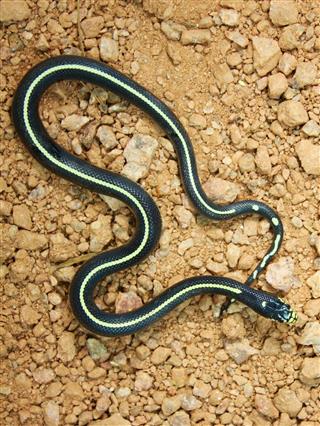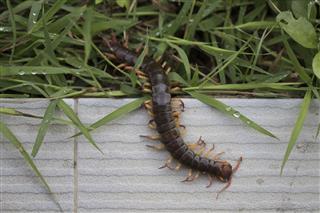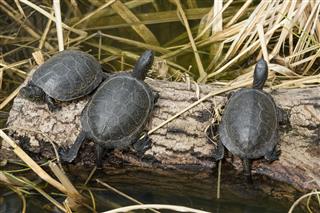
What is common between snakes and turtles? How are they related to lizards and crocodiles? In fact, all these animals are classified as reptiles. Though they do not look similar, there are some basic characteristics that are shared by these animals.
Reptiles lack the secondary palate that allows breathing while chewing and swallowing. However, crocodiles have a bony secondary palate and turtles have a partial secondary palate.
Living organisms are classified into different groups on the basis of the features they share. The animal kingdom is divided into several phyla. Each phylum consists of smaller groups called classes, and each class has subdivisions termed orders. Each order is divided into families, which in turn has different genera that are made up of species.
When it comes to reptiles, they belong to the phylum Chordata in the class Reptilia, which is further divided into four orders – Crocodilia, Rhynchocephalia, Squamata and Testudines. As the name rightly suggests, the order Crocodilia comprises crocodiles, gavials, caimans, and alligators. The order Squamata has snakes and lizards, whereas turtles and tortoises belong to Testudines. The order Rhynchocephalia has a single reptile species that is found only in certain parts of New Zealand. These reptiles are called tuataras, and they resemble lizards in appearance. In short, the class Reptilia has more than 8,000 species of animals that are different from one another. However, they have certain common features, due to which they were classified in a single class.
It is a common fact that snakes, crocodiles, lizards, etc., are reptiles. But, how do you define a reptile? For example, birds can be described as vertebrates with wings. However, such a simple definition may not work for reptiles, as they have diverse features. Though they are believed to have evolved from amphibians, there are different types of reptiles with distinct features. They share the characteristics of both amphibians and mammals, but are different and unique. This article enlists some common characteristics of reptiles.
Dry Skin with Scales/Scutes
Reptile skin is unique in the sense that it lacks feathers, does not have hair, and is not moist. It is tough and scaly. Reptiles have a dry skin that is covered with scales or scutes made of keratin. While scales are small, thin, bony plates that develop from the epidermis of the skin; scutes are bony structures that form from the dermis.
Snakes have scales and scutes, whereas turtles and crocodiles have scutes. These structures prevent water loss to a large extent. In case of lizards, scales can be in the form of keratinized epidermis, or in tubercular form. Almost all reptiles have scales or scutes. Non-reptiles like fish too have this feature.
Four legs or No legs
Most of the reptiles are tetrapods with two sets of paired limbs. In other words, they are four-legged animals, but there are exceptions like snakes and certain types of lizards. However, it is believed that these legless reptiles evolved from tetrapod ancestors. When compared to amphibians who have legs on the sides of their bodies, reptiles have their legs that are angled downwards. This enables these animals to lift their body and move faster.
Most of these animals have five clawed toes on each limb. Crocodiles have four digits on their hind feet. In some turtles, the digits are fused to form paddles.
Ectothermy
Reptiles are ectothermic animals who are dependent on external sources for regulating their body temperature. Like mammals, the body temperature of reptiles is not regulated by internal mechanisms. This is the reason why some reptiles bask in the sun or bury themselves in soil.
So reptiles are found in different habitats including very hot deserts. If the temperature levels are not favorable, some reptiles prefer hibernation too. Even their activity rate is dependent on external temperature, and they are found to be active during warm weather. If the body temperature goes down, the reptile would become tired and inactive. Unlike endothermic animals, reptiles can stay inactive for long durations and save energy. They are also categorized as poikilotherms, as their body temperature varies with changes in external temperature.
Internal Fertilization and Amniotic Eggs
Sexual reproduction through internal fertilization is common in reptiles, and most of them lay amniotic eggs. Some reptiles retain the eggs inside their bodies till they hatch. The tough, leathery shell of reptile eggs protects the young one. While the yolk provides nourishment, the shell is porous enough to allow passage of oxygen and other gases. In case of crocodiles and turtles, the temperature of the eggs during the incubation period is the factor determining the gender of the offspring.
Reptile Bodily Systems
All reptiles except snakes have features like bony skull, spinal column, rib cage, and the bones that form the framework of the limbs. Reptiles have spinal bones in the pelvic region too. They have a well-developed brain and a central nervous system too. The breastbone protects the heart as well as the lungs. When it comes to reptile skeletons, another prominent feature is the single ball-and-socket connection at the neck joint that connects with the head.
Unlike amphibians, reptiles do not pass through an embryonic stage with gills. These animals breath with well-developed lungs, right from birth. Most of them have two lungs, except some snakes, which have a single lung. Reptiles don’t have gills and even cutaneous respiration is negligible.
All reptiles have three-chambered hearts, except crocodiles who have four-chambered hearts, like mammals and birds. The three chambers consist of two atria to receive blood and one partially divided ventricle for pumping blood.
The digestive system of reptiles is similar to that of other vertebrates; but the gut, the urinary ducts and sexual organs lead to one posterior chamber, called the ‘cloaca’, which has a muscular opening at the base of the tail. In case of those who inhabit arid regions, water is further absorbed into the body from the waste in the cloaca, before excretion. Most of the reptiles are carnivorous, and they have simple digestive systems, whereas herbivorous reptiles have long intestines.
Reptiles have keen sense organs, which help them search food and escape from predators. Eyes are located at the front of the head to facilitate binocular vision. While most of the lizards can move each eye independently, some of them have a protective cover above the eyes. Reptile eyes are adapted for distant vision, but they are also capable of near vision, with proper muscular movements. However, blind snakes lack eyes and have vestigial eyes that are located beneath the scales on the head. Most of the reptiles lack external ears and the eardrum is located near their eyes.
This is only a generic overview about the basic characteristics of reptiles. While these features are common for almost all types of reptiles, there are numerous exceptions too.
Reptiles are considered as the first animals with the ability to live and multiply on land. They dominated the Earth for over 200 million years and still inhabit all the continents, except Antarctica. In short, these animals can be seen in diverse habitats, ranging from ponds, seas, lakes, treetops, deserts, and mountain ranges. Being cold-blooded, reptiles cannot generate body heat on their own. This is the reason behind their absence in the Antarctic region.








































